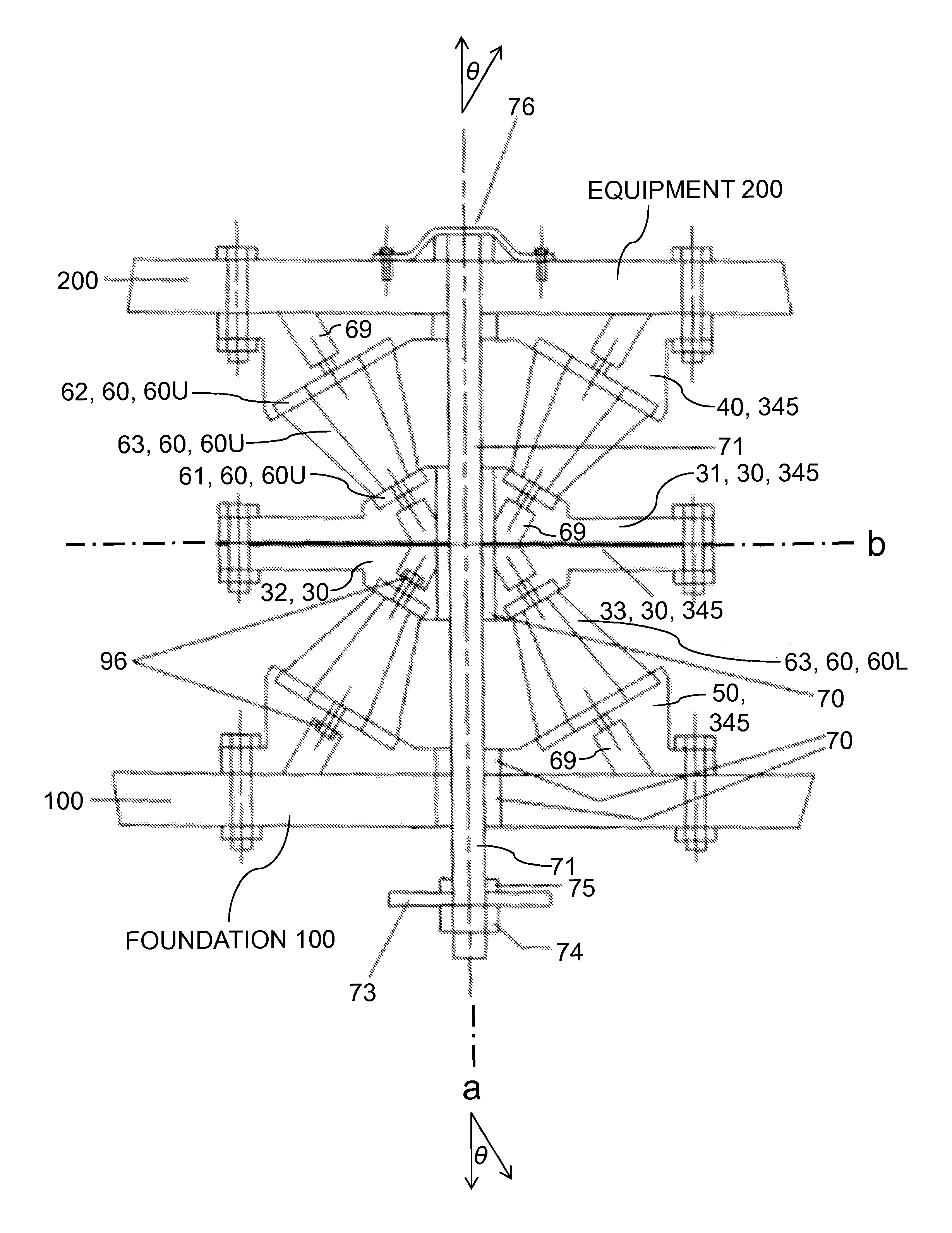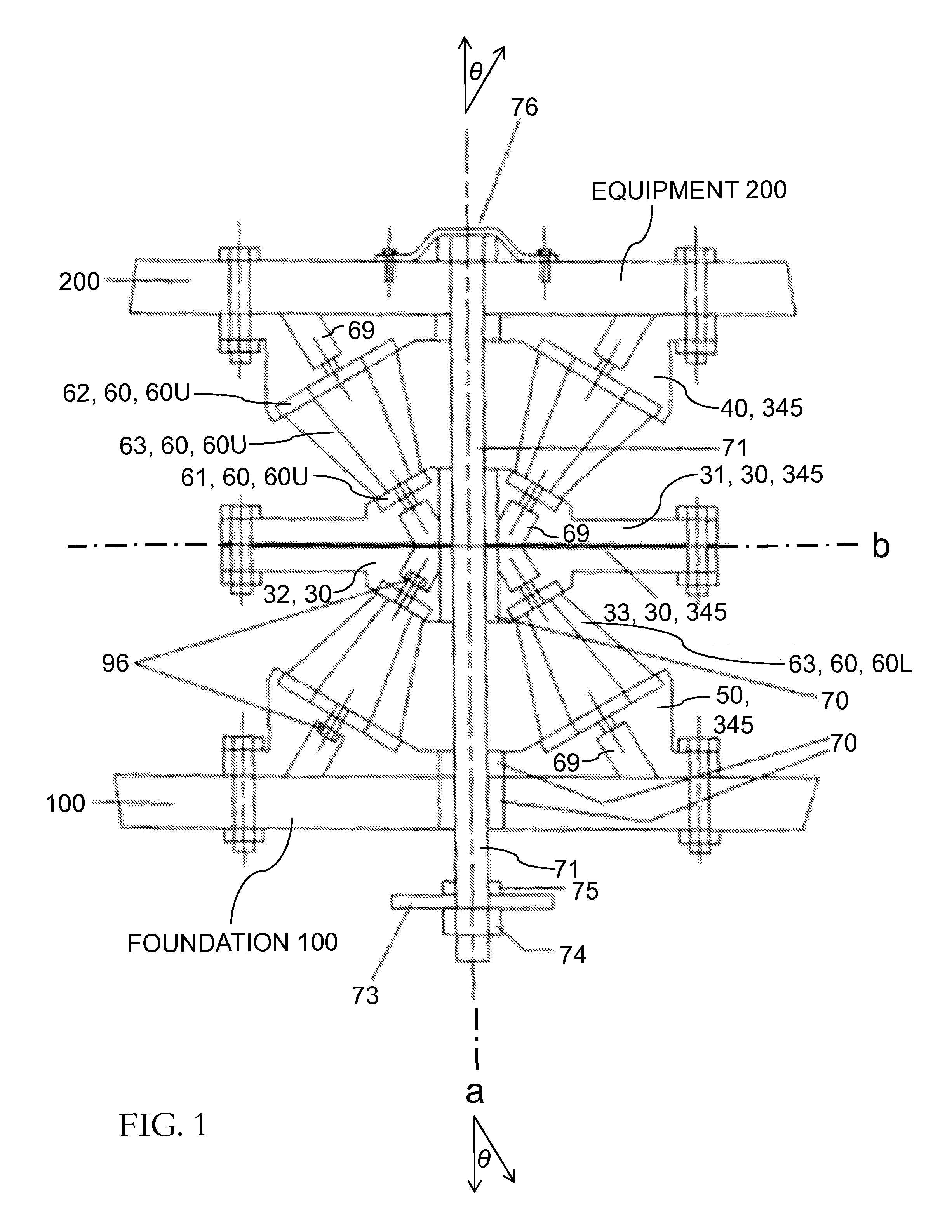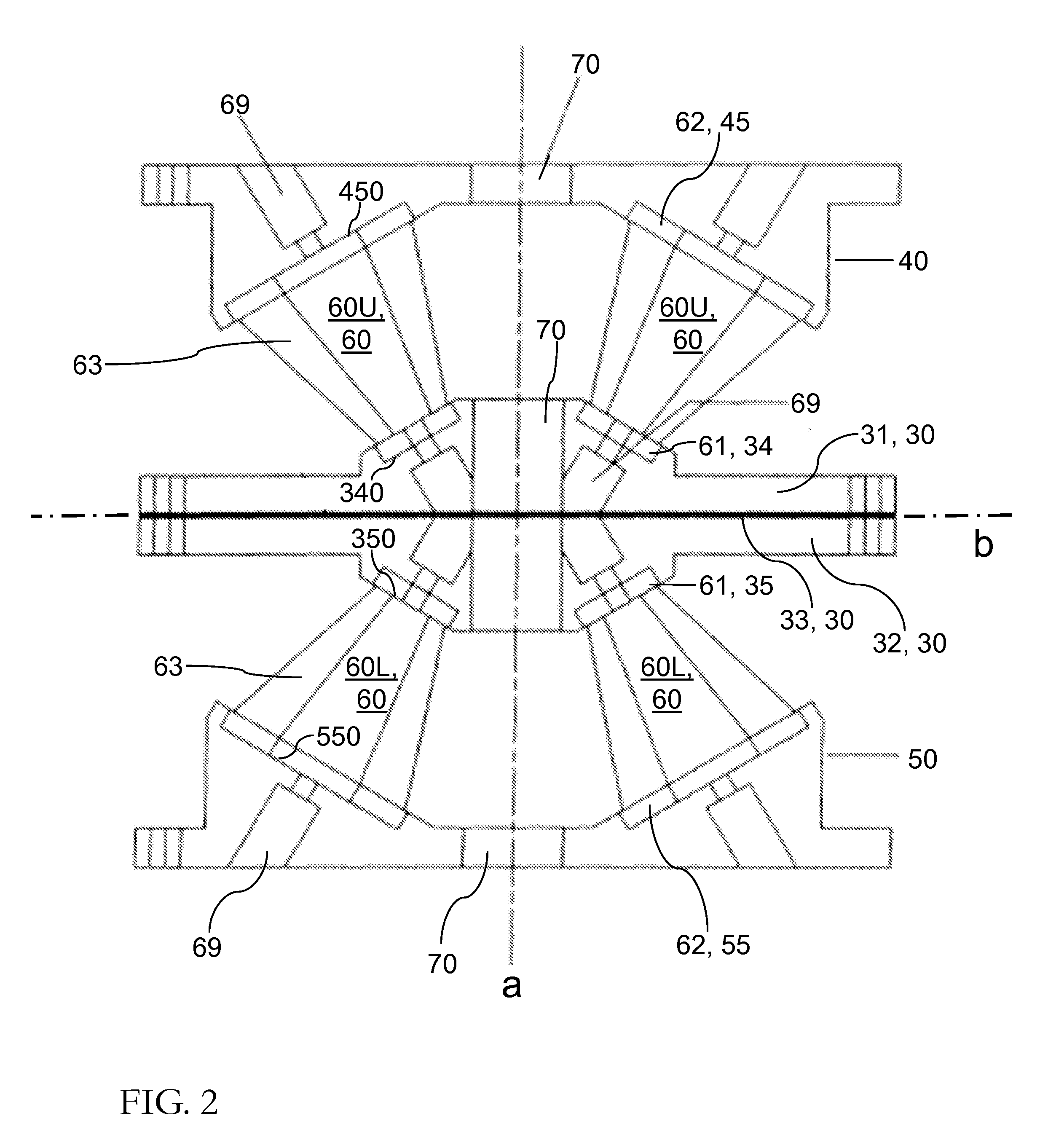Adaptable multi-element vibration isolator
a multi-element, vibration isolation technology, applied in the direction of shock absorbers, mechanical devices, springs/dampers, etc., can solve the problems of insufficient natural frequency response of conventional isolation mounts, and achieve the effect of reducing space occupation, improving quality and performance, and facilitating inspection
- Summary
- Abstract
- Description
- Claims
- Application Information
AI Technical Summary
Benefits of technology
Problems solved by technology
Method used
Image
Examples
Embodiment Construction
[0034]Referring to the figures and particularly to FIG. 1 and FIG. 2, the present invention's vibration / shock isolation mount is characterized by a vertical geometric axis of symmetry a, and by a horizontal geometric bisector plane b. Geometric axis a is perpendicular to geometric plane b. The inventive mount depicted in FIGS. 1 and 2 includes eight resilient elements 60 and a housing 345 for the resilient elements 60. The eight elements 60 that are shown are identical, or practically so. The housing 345 has three main rigid (e.g., metal / metallic) sections, delimited according to situation along axis a, viz., a middle section 30, an upper end section 40, and a lower end section 50.
[0035]Four of the resilient elements 60 are “upper” resilient elements 60U; four of the resilient elements 60 are “lower” resilient elements 60L. Upper resilient elements 60U are vertically collocated (at least approximately so) with respect to lower resilient elements 60L. Housing 345 holds upper resilien...
PUM
 Login to View More
Login to View More Abstract
Description
Claims
Application Information
 Login to View More
Login to View More - R&D
- Intellectual Property
- Life Sciences
- Materials
- Tech Scout
- Unparalleled Data Quality
- Higher Quality Content
- 60% Fewer Hallucinations
Browse by: Latest US Patents, China's latest patents, Technical Efficacy Thesaurus, Application Domain, Technology Topic, Popular Technical Reports.
© 2025 PatSnap. All rights reserved.Legal|Privacy policy|Modern Slavery Act Transparency Statement|Sitemap|About US| Contact US: help@patsnap.com



